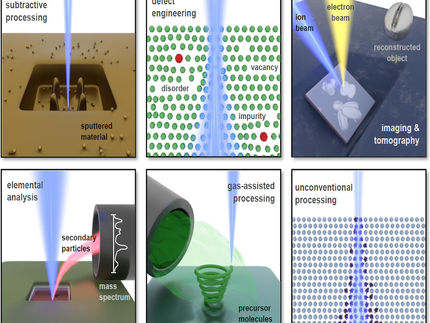Elsevier MDL introduces MDL® Patent Chemistry Database
28 years of patent chemistry now structure-searchable
Advertisement
Elsevier MDL has introduced the MDL Patent chemistry Database, a new structure-searchable collection of patent chemistry information specifically designed for research scientists and information professionals. With the database researchers can rapidly explore World, U.S. and European patents dating from 1976 using structure, reaction and text searches. The MDL Patent Chemistry Database offers functionality to improve synthesis planning, access enhanced bioactivity profiles and easily determine data relevance.
The database will be available beginning November 2004 via the MDL® CrossFire Direct system or for in-house installation, and in 2005 will be offered through the DiscoveryGate® Web-based platform for accessing scientific information from databases, journal articles and major reference works.
"The MDL Patent Chemistry Database enables chemistry, pharmacology and other life sciences researchers in industry and academia to search chemical reactions, substances and substance-related information and quickly locate highly relevant data," said CEO Lars Barfod. "With 28 years of chemistry patents from around the world, the database offers researchers important access to information about unique compounds-nearly 70% of the compounds in the Patent Chemistry Database are not found in other DiscoveryGate databases. This valuable resource complements the broad portfolio of MDL databases covering chemistry, synthetic methodology, pharmacology, bioactivity, metabolism, toxicology and sourcing."
The MDL Patent Chemistry Database contains 1.5 million structure-searchable chemical reactions and over 1.6 million organic, inorganic and organometallic compounds and associated information taken from approximately 340,000 organic chemistry and life science patents. The database is updated bi-weekly and expected to grow rapidly, with approximately 500,000 reactions, 800,000 compounds, and 35,000 patent publications per year. All reactions have the full experimental text supplying crucial process details, and are indexed with InfoChem ClassCodes, allowing seamless retrieval of similar reactions from all MDL databases and Integrated Major Reference Works. The database indexes not only compounds with data, but also prophetic compounds, which are seldom covered elsewhere. The Patent Chemistry Database is unique in that it offers researchers the combination of the claims text and the Markush structure/reaction display. The latter is available for patents from December 2003 onwards. This powerful combination makes it easy to check the relevance of a located patent.
Other news from the department research and development
Most read news
More news from our other portals
See the theme worlds for related content
Topic world Synthesis
Chemical synthesis is at the heart of modern chemistry and enables the targeted production of molecules with specific properties. By combining starting materials in defined reaction conditions, chemists can create a wide range of compounds, from simple molecules to complex active ingredients.

Topic world Synthesis
Chemical synthesis is at the heart of modern chemistry and enables the targeted production of molecules with specific properties. By combining starting materials in defined reaction conditions, chemists can create a wide range of compounds, from simple molecules to complex active ingredients.
























































